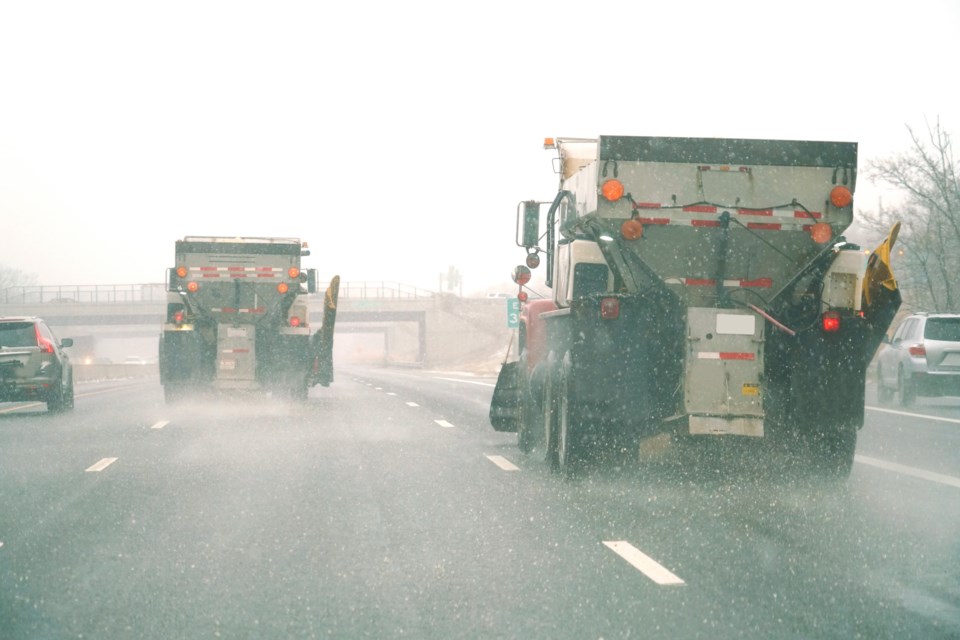Madeline Shepard is Watersheds Coordinator for the Chippewa Luce Mackinac Conservation District
Winter weather has made its roaring return to the Upper Peninsula. The La Niña global weather pattern has pushed cooler and wetter-than-normal wintertime conditions into the continents’ northern states and territories. Road crews and homeowners alike have battled relentlessly this season to stay on top of snow management. Taking a swim in the refreshing lakes and rivers of the Eastern Upper Peninsula isn’t a priority for many folks during this season. However, the way we manage our snow and ice during the winter can drastically change our favorite swimming spots over the course of the year.
Road salt is one of the most effective and widely used deicers in Michigan. It is a greatly effective tool between 20-30°F. Additionally, MDOT has introduced more effective application methods to stretch salt further during winter storm events.
This includes pre-wetting salt so it sticks to roads better and slowing plow trucks to 25 mph to prevent it from scattering off the roadway. Many fail to acknowledge, however, that road salt is drastically less effective below 20°F. Below 10°F, roads will refreeze even faster and create road conditions more hazardous than when before road salt was applied.
Creating more effective application methods was in part due to the rising prices of road salt. The other reason is due to the path road salt takes after it has done its job. Adding salt to water will make it denser, or heavier. For the environment, this means that the salted water that eventually drains into our favorite lakes will sink to the bottom. In extreme cases this may form a chemical gradient, or a chemocline. This is a chemical separation of waters within one waterbody, much like putting oil and water into the same jar.
In the spring and fall, lakes experience a turn over. This is where water on the surface half of the lake warms or cools before water on the bottom of the lake and swaps places (warm water wants to rise, cold water wants to sink). This process is essential to re-oxygenation of the lake and the redistribution of essential nutrients for plant growth, and it’s why the lake will appear murky at the change of seasons. However, if enough salty water has settled to the bottom of the lake, it acts as a barrier to turn over.
What can you do to lower your impact on our freshwater resources? The answer is fairly simple. Eliminate or lower your personal use of road salt, especially if you live near a waterbody. While there are other substances that will also melt snow and ice, these substances will produce the same outcome as road salts when used excessively.
When it comes to an environmentally friendly, low-impact method to snow removal, nothing beats a warm pair of gloves and a shovel. Consider saving the salt.
If you would like to know more about how the Conservation District works with private landowners to protect their water please reach out to Madeline Shepard, CLMCD Watersheds Technician by calling 906-748-0837 or email at [email protected].

.jpg;w=120;h=80;mode=crop)

